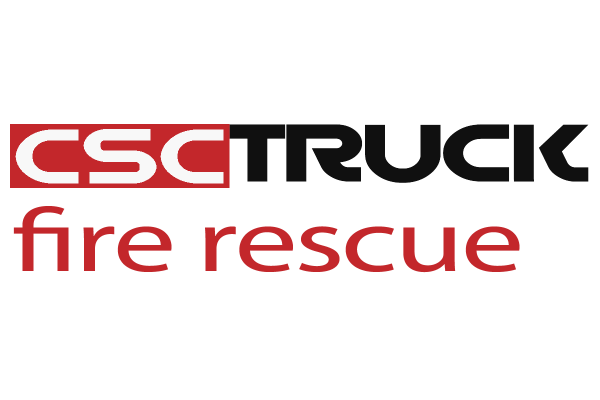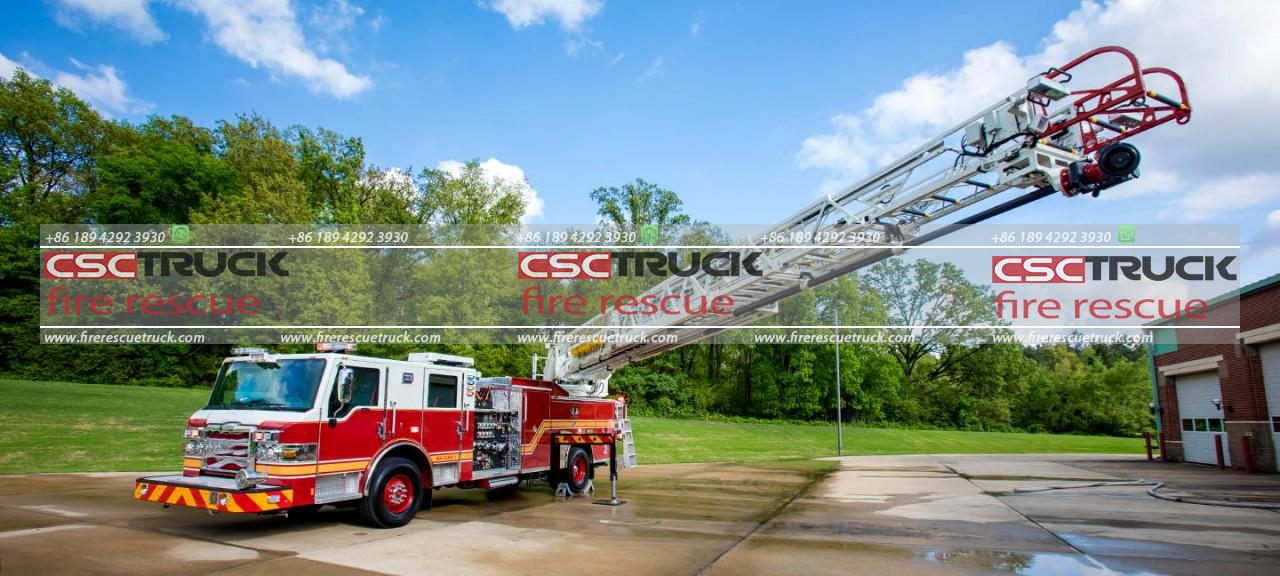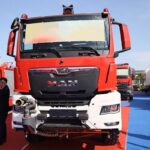▎ Double-Row Cab Airport Fire Truck Chassis
This red-painted double-row P500 is a customized airport fire truck chassis. The “XT” indicates that it is an engineering and special-purpose vehicle chassis. The XT badge on the front grille, paired with the red paint, extremely high ground clearance, and horizontally styled mirror housings, all give off a powerful impression—like a beast ready to charge.
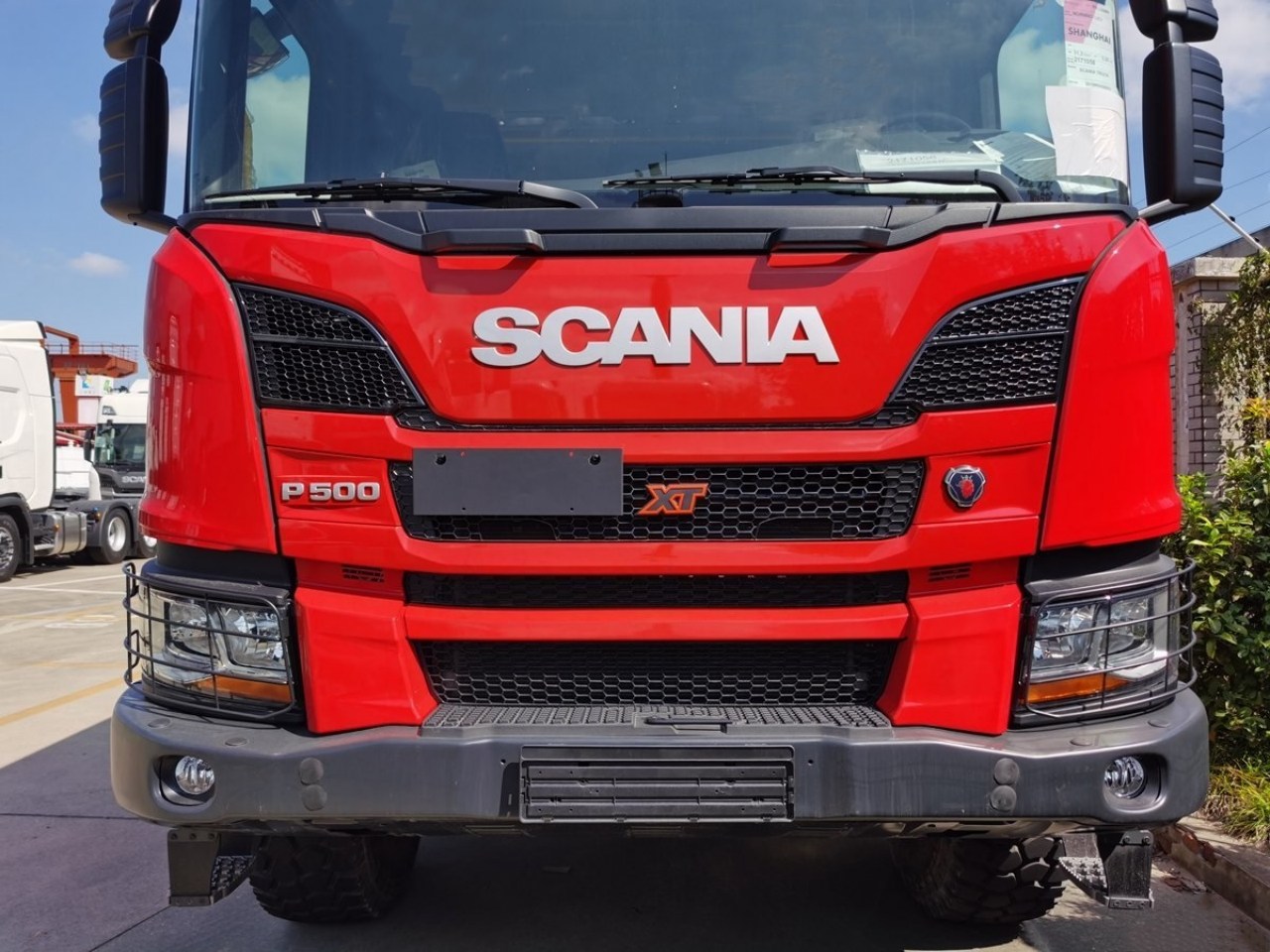
The factory-made double-row cab reduces the cost and risk of post-production modifications. Currently, most double-row cabs are converted by the body builders themselves, who cut the single or extended cabs and weld on an extra row behind. Such modifications often result in reduced structural integrity and carry a risk of cracking. A factory-built double-row cab perfectly solves these problems and ensures better consistency across all interior configurations.
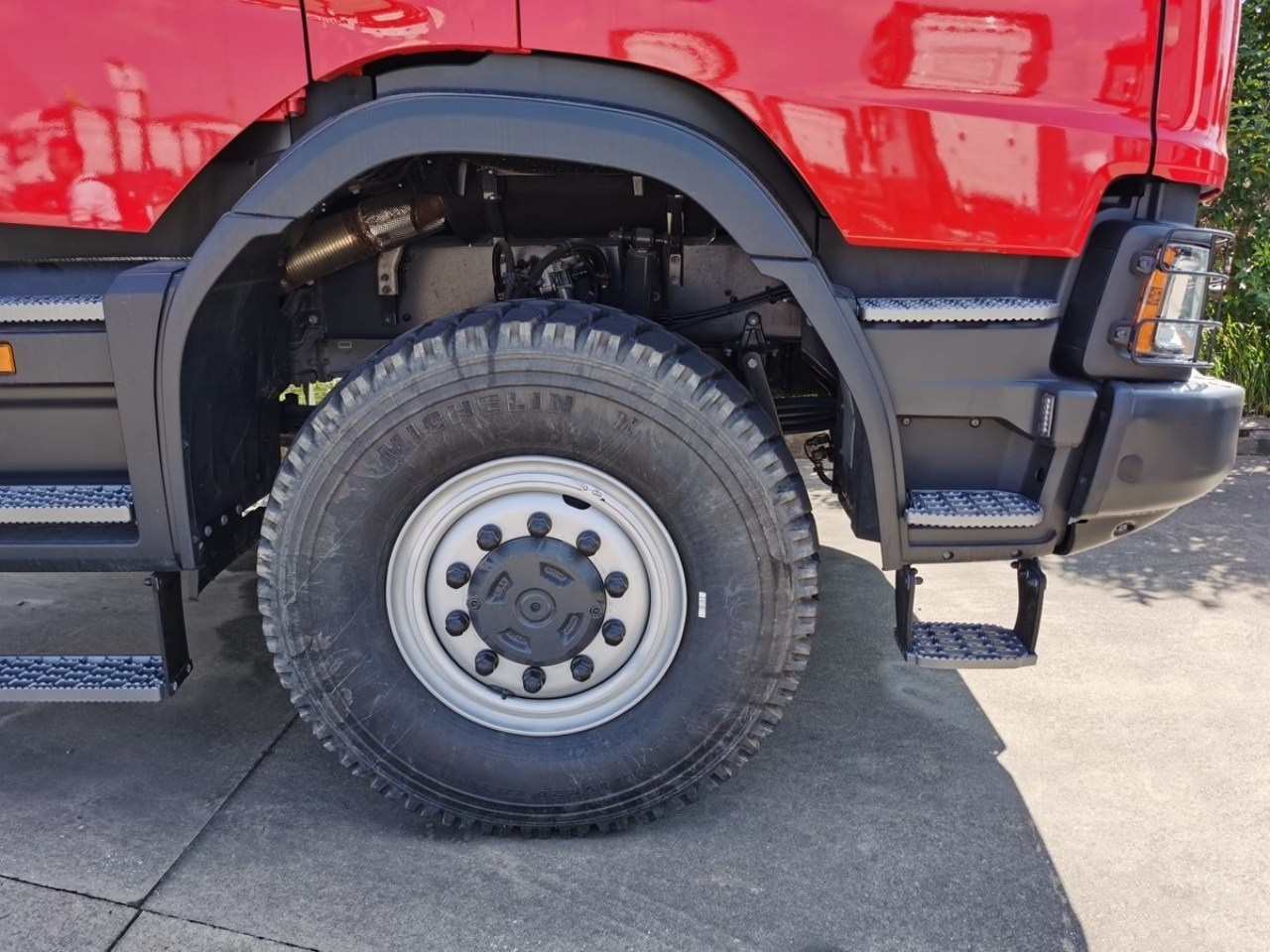
Airport fire trucks require high off-road capability. Imagine an emergency at the airport—these trucks need to respond immediately, often going directly off the runway, which is typically surrounded by grass. That’s why off-road performance is crucial. At the same time, emergencies demand speed and acceleration, so this vehicle is equipped with a 500-horsepower engine, 6×6 drive system, and 395/85R20 off-road tires.
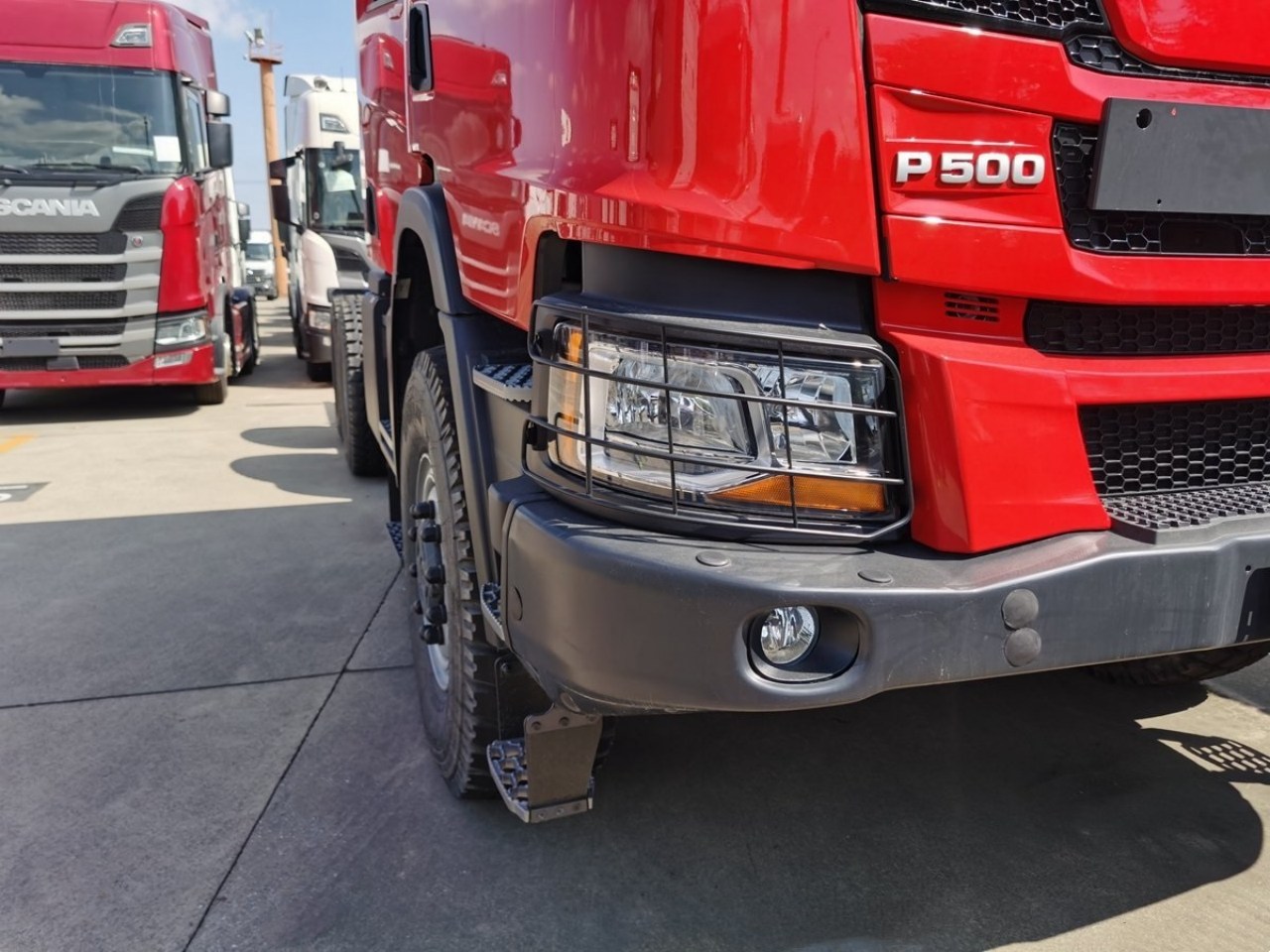
Additionally, the bumper is designed high off the ground and is made of full steel, with fog lights on each side. The lowest step of each door’s entry ladder is connected by a flexible joint to prevent damage when driving over rough terrain. The headlights resemble those on standard highway tractors—a benefit of Scania’s modular design. There are also protective covers over the headlights to reduce the chance of damage from impacts.
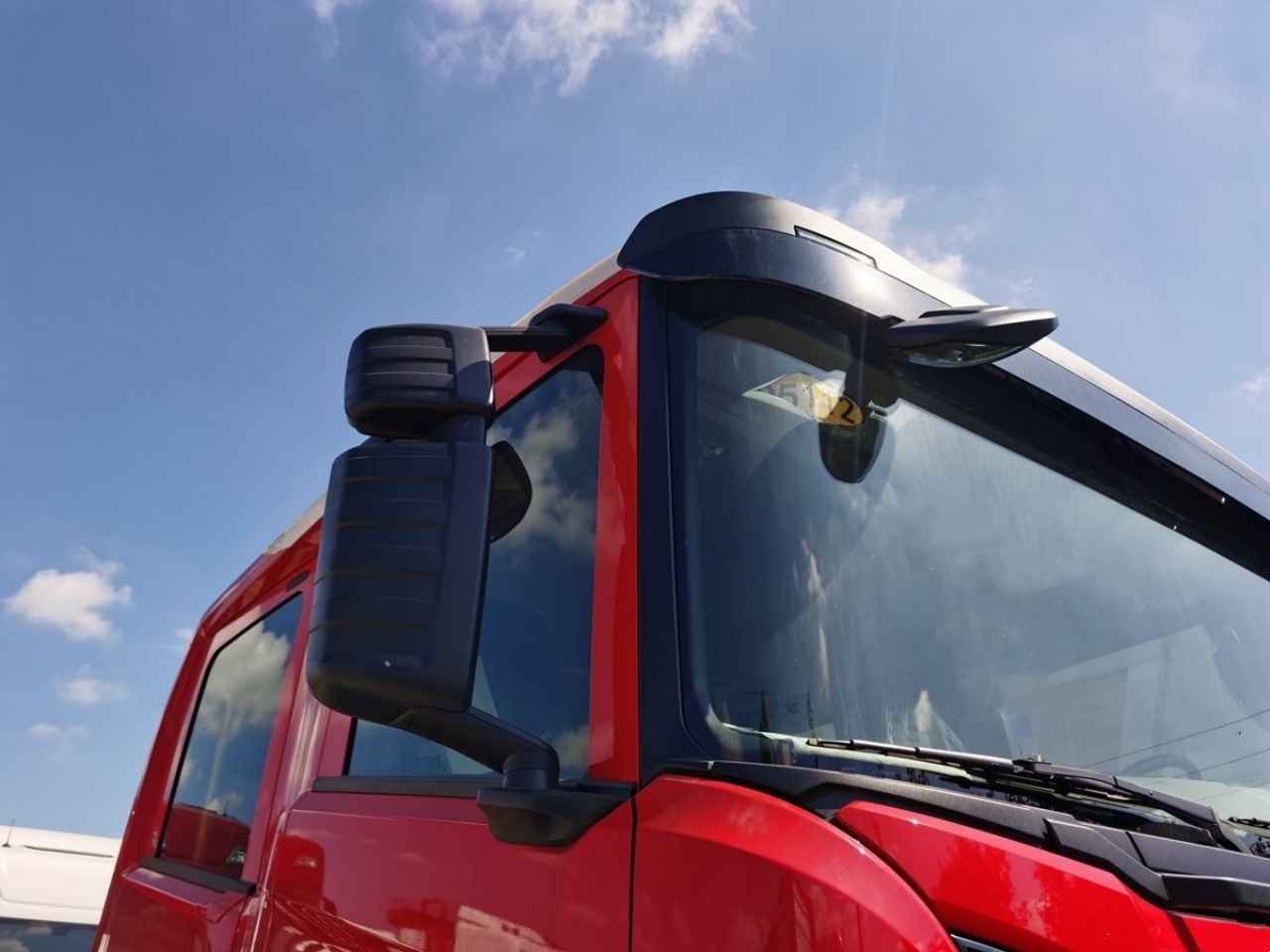
There are 2 main visual differences compared to a regular highway tractor. First, there is a sun visor on top of the flat cab roof, adding to the vehicle’s imposing appearance. Second, the mirror housings have horizontal bars—a signature element of Scania’s engineering vehicle series, resembling tiger whiskers.
▎Cab Layout: Similar to Standard P Series, Multiple Reserved Modification Points
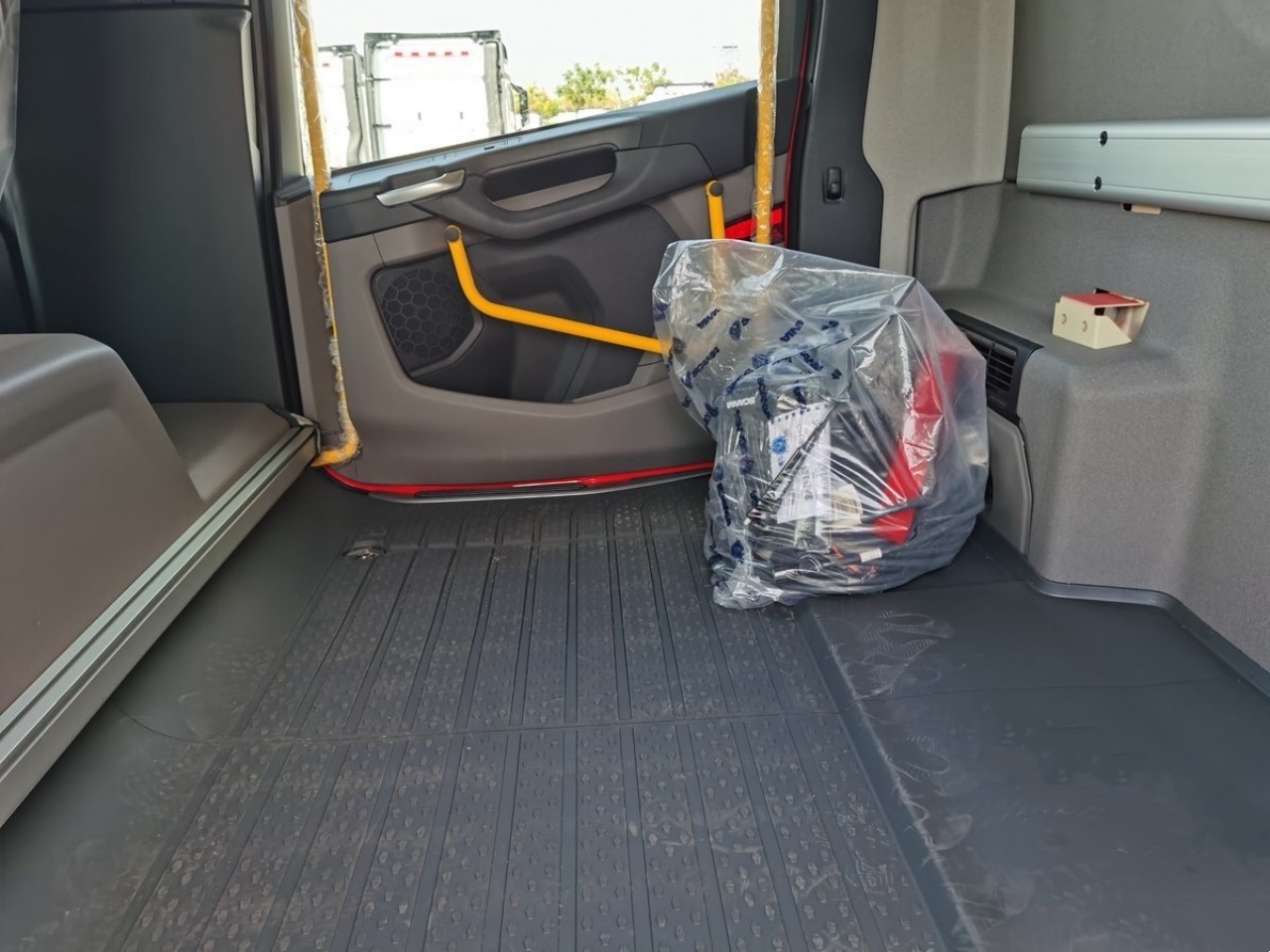
Entering the rear section of the cab, you’ll find it empty—intended for customization by the body manufacturer depending on client needs, typically outfitted with additional seating or emergency equipment. Yellow grab handles are mounted on the front and rear doors, along with additional yellow handles on the cab sides to help personnel board and exit quickly.
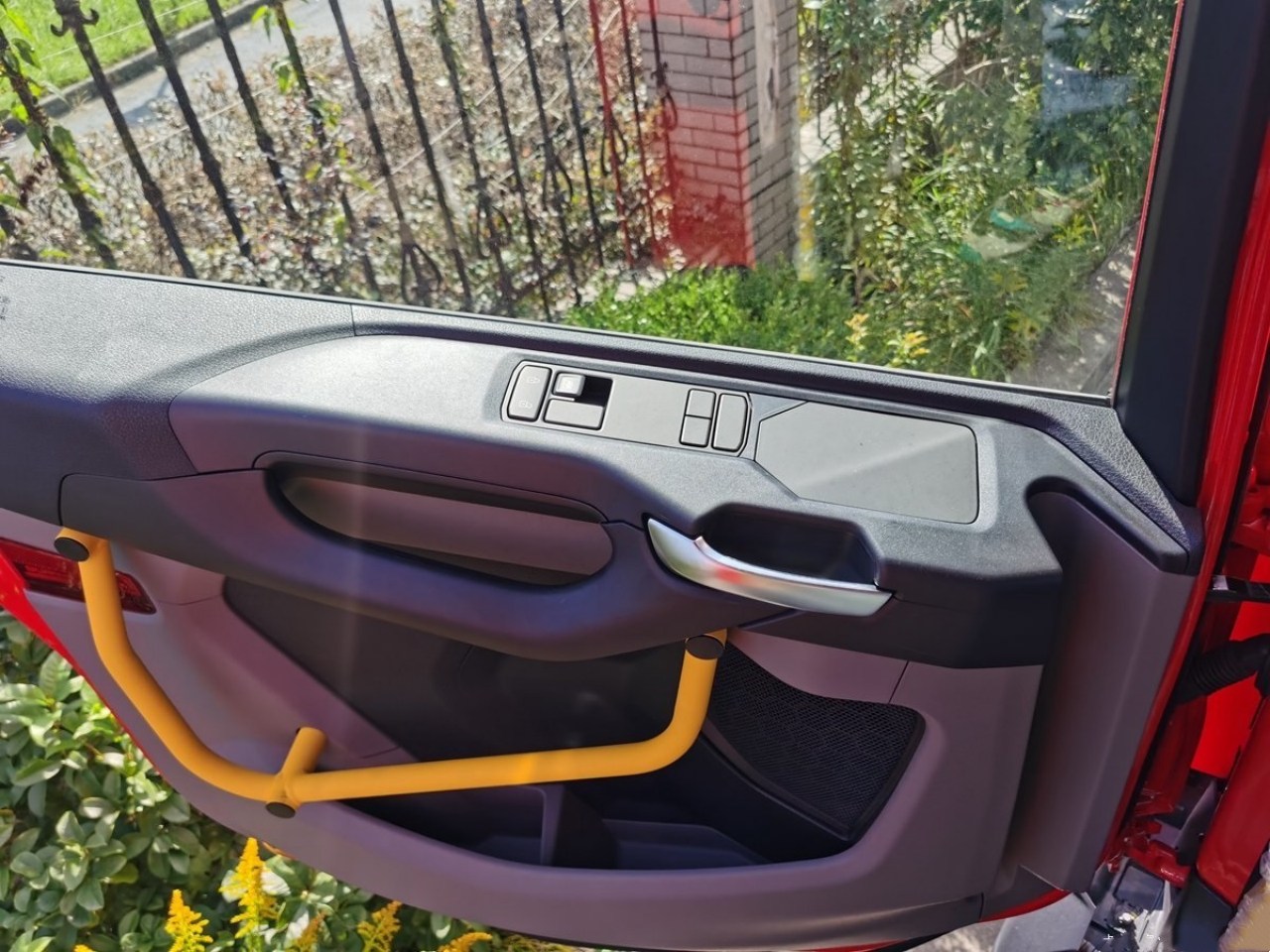
One notable feature is the 2 drainage holes in the rear floor. After firefighting, when personnel return soaked, water can drain out instead of accumulating inside the cab. The front seats retain the high-comfort air suspension design, just like in Scania’s highway tractors.
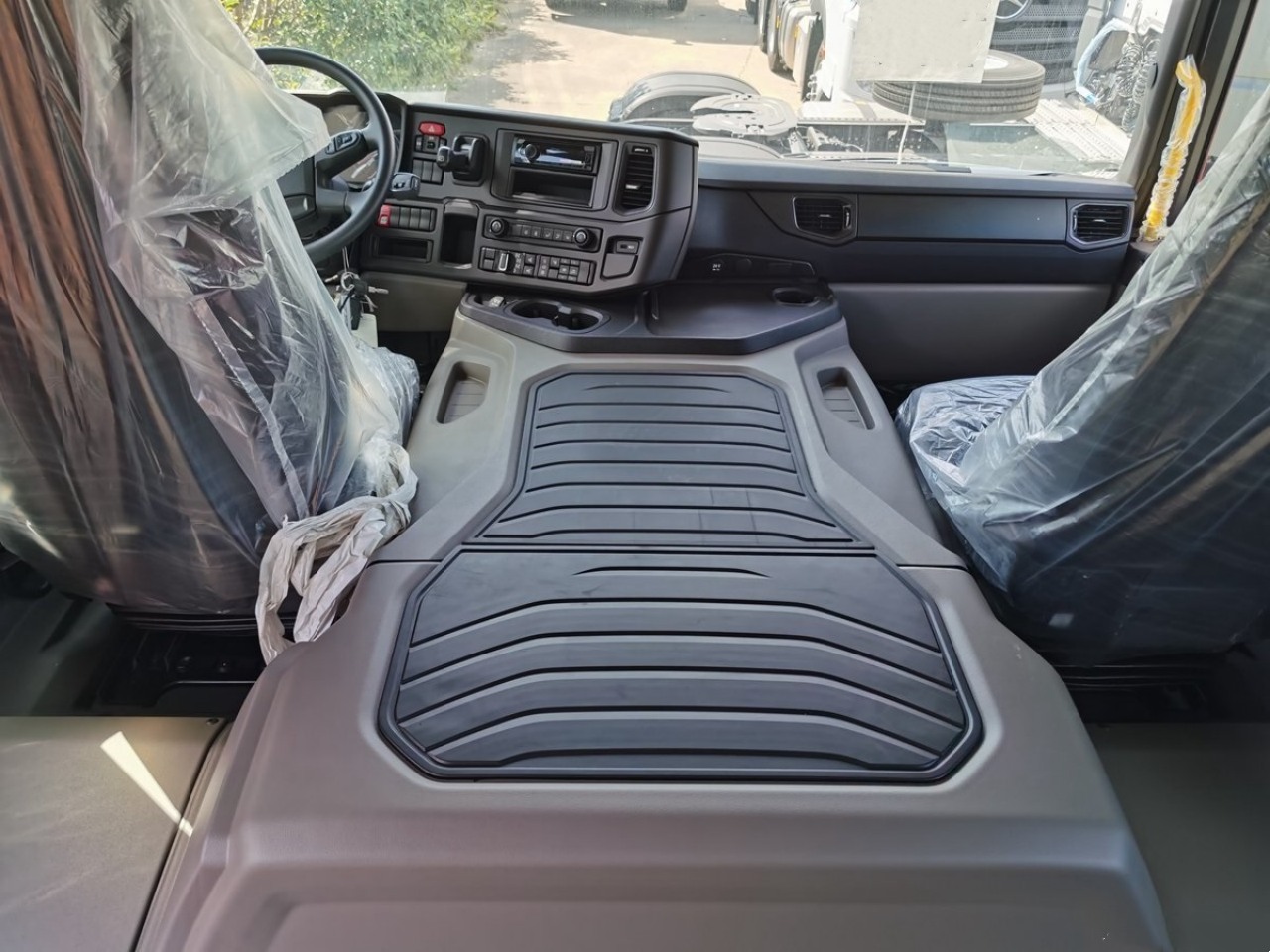
Due to the cab and chassis design, there is a large hump in the middle, caused by the positioning of the engine and transmission. However, Scania has cleverly designed the center section with a soft black rubber pad, which is both practical and visually refined.
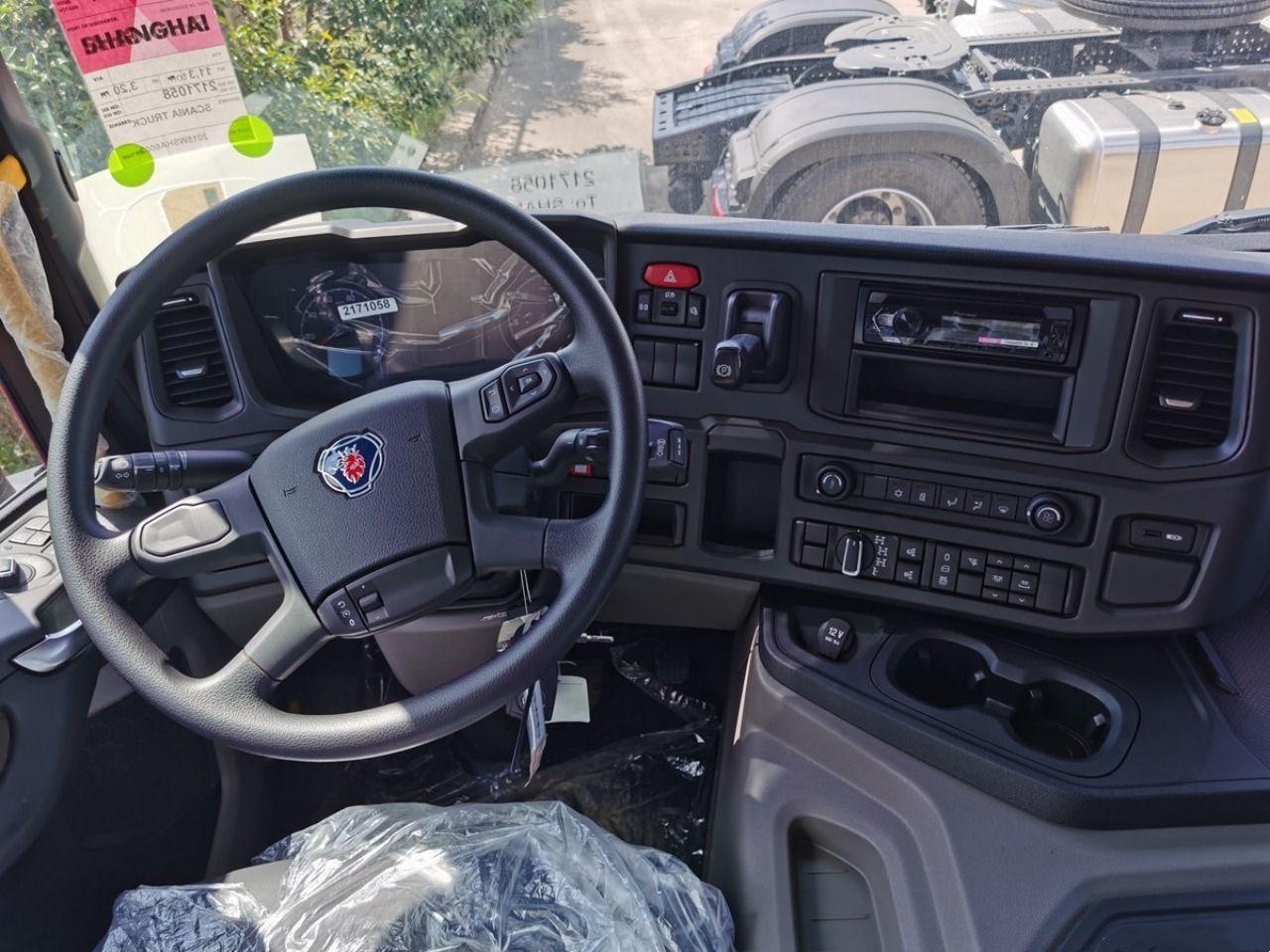
The dashboard is modular, just like in the tractors. The steering wheel, instrument cluster, and even the center control buttons are identical. However, the rotary knob on the center console highlights this vehicle’s special purpose—it allows different differential lock settings based on operating conditions. Combined with 500 horsepower, the high ground clearance, and off-road tires, this machine is built to be aggressive.
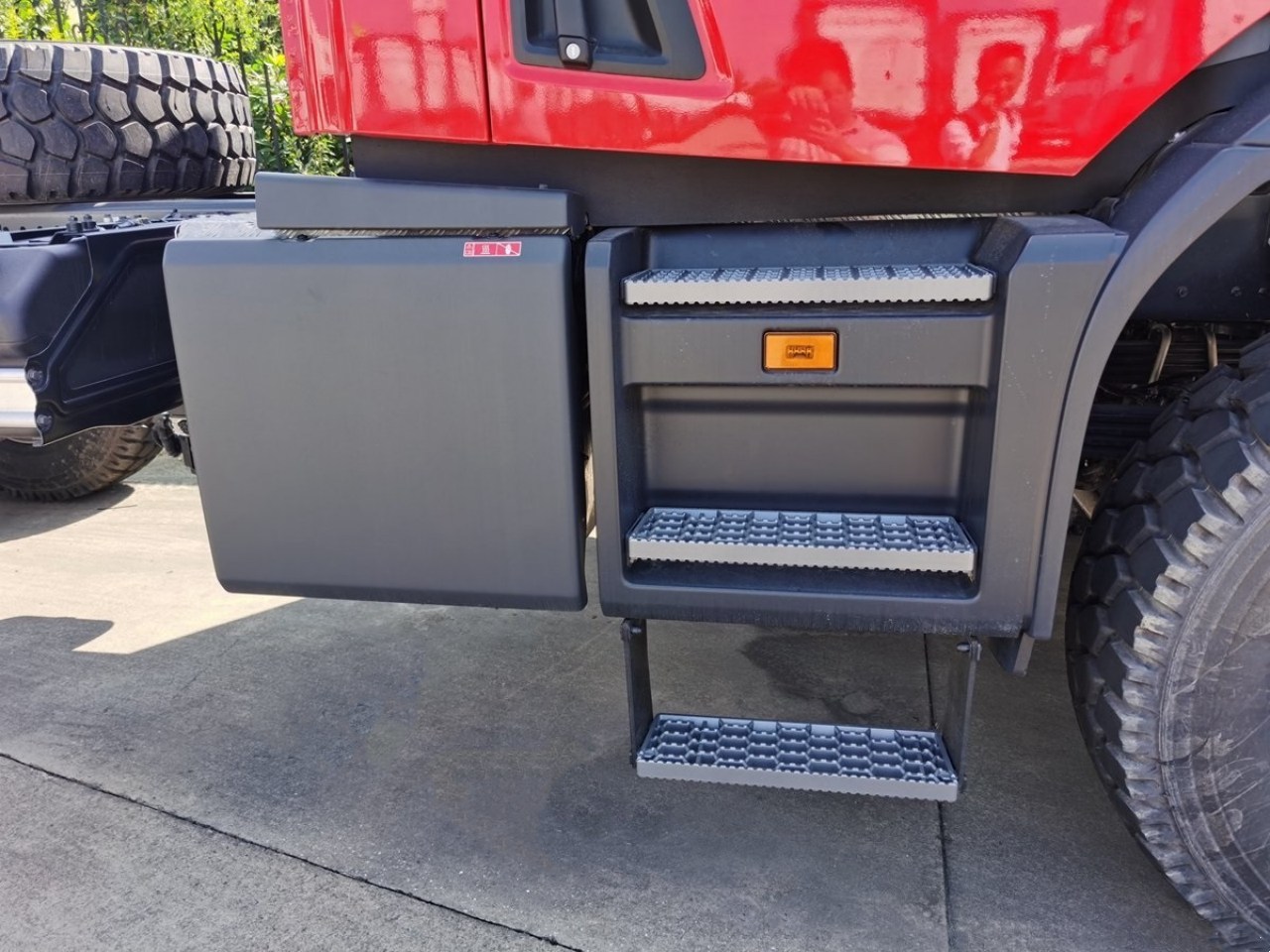
Overall, the interior of the P500 XT carries forward Scania’s usual luxury design style. Being a special-purpose vehicle, it also reserves many customization zones, including a fully open rear cabin space for the body builders to freely adapt.
▎500 Horsepower with Allison AT Transmission — Leaf Springs & Drum Brakes Built for Reliability
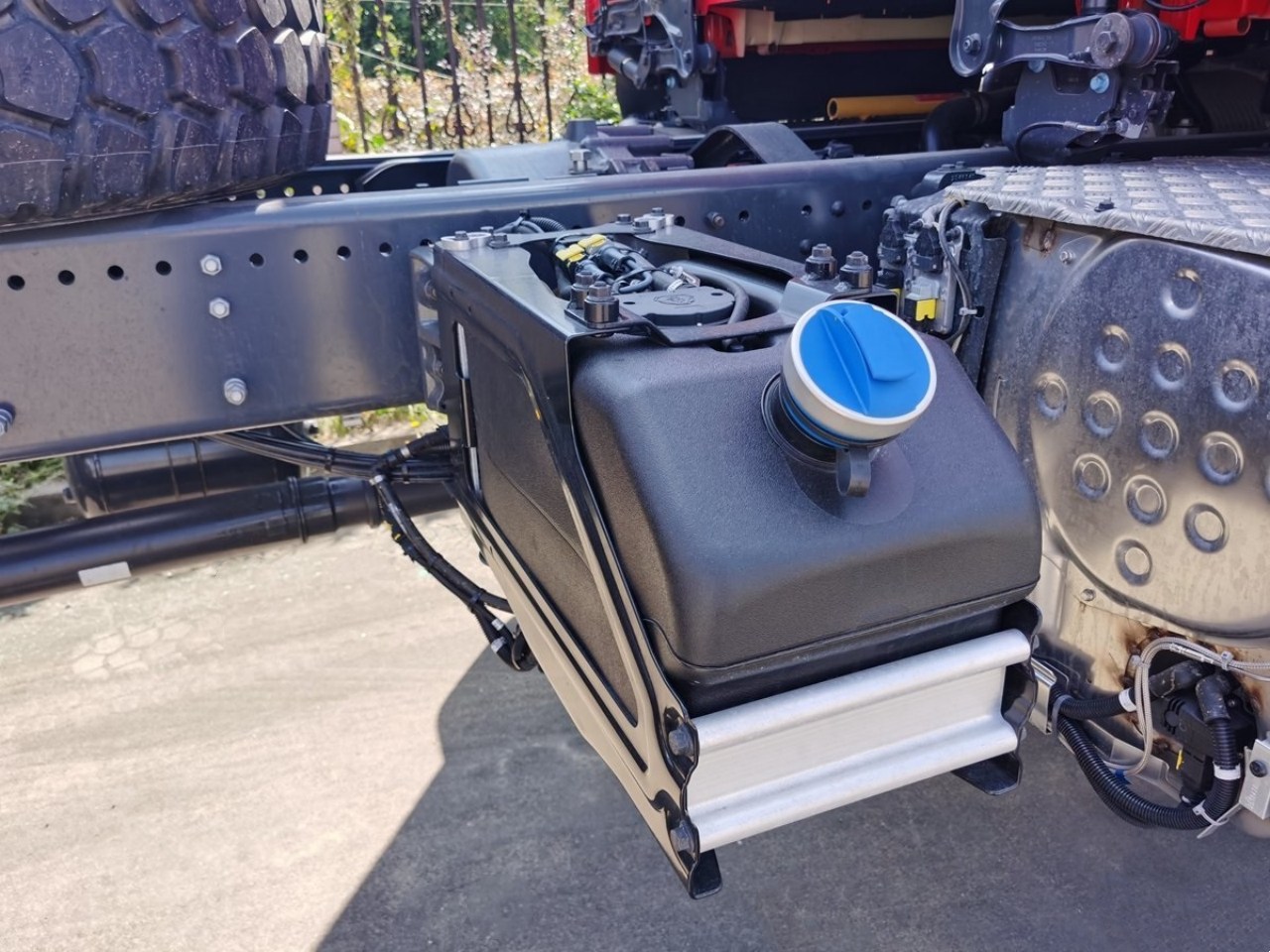
Now let’s move to the key component—the chassis. In terms of power, it’s equipped with Scania’s 13L engine series, producing up to 500 horsepower and 2,550 Nm of torque. Judging by the after-treatment module, it meets Euro VI emission standards. This engine is mature and well-received in the tractor truck segment. The 500 hp powerplant gives this beast the ability to accelerate to high speeds in a short time.
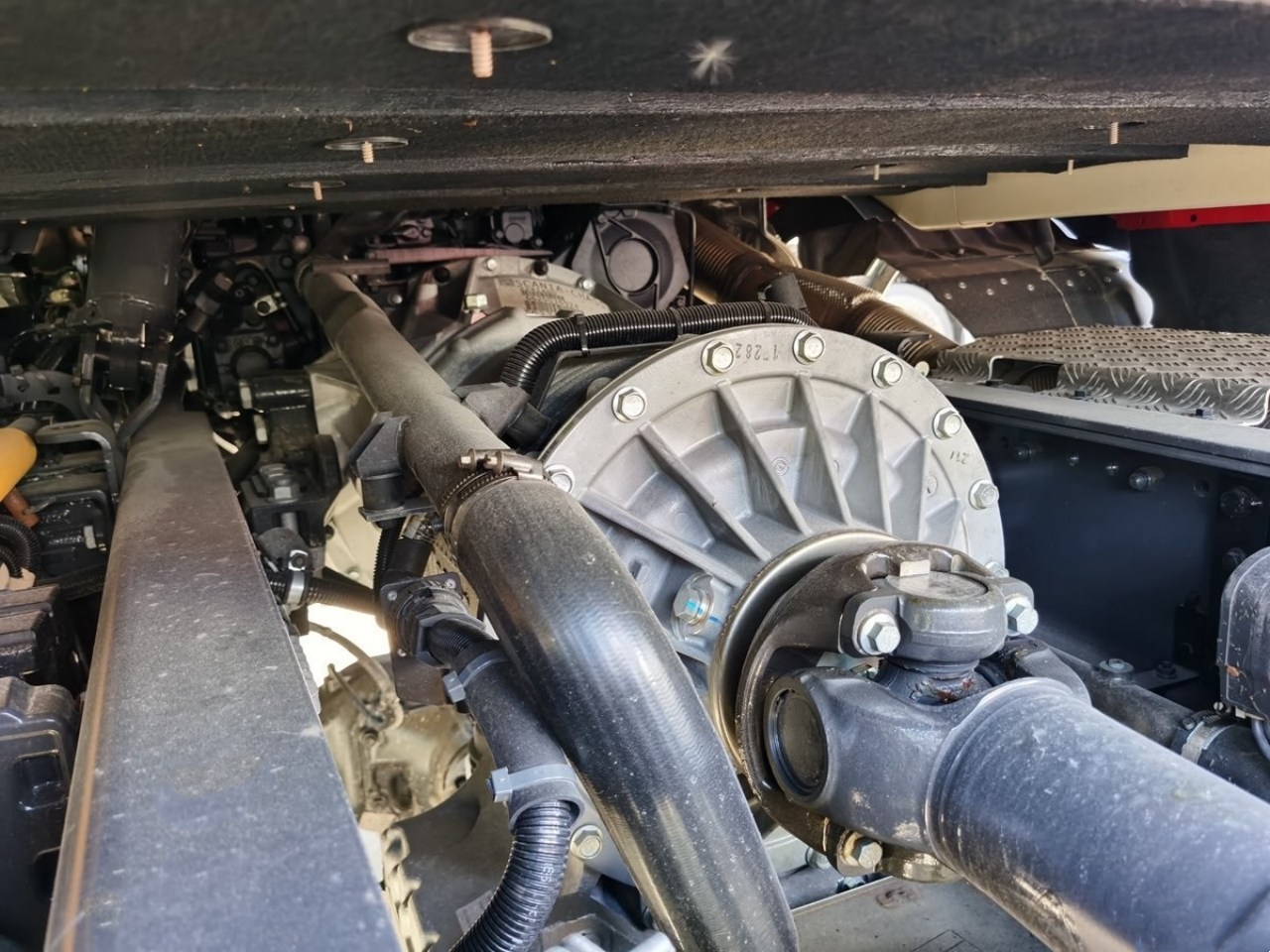
Instead of Scania’s in-house AMT, this vehicle uses an Allison AT transmission from the U.S. Compared to AMTs, ATs offer smoother shifting and come with a more efficient retarder system.
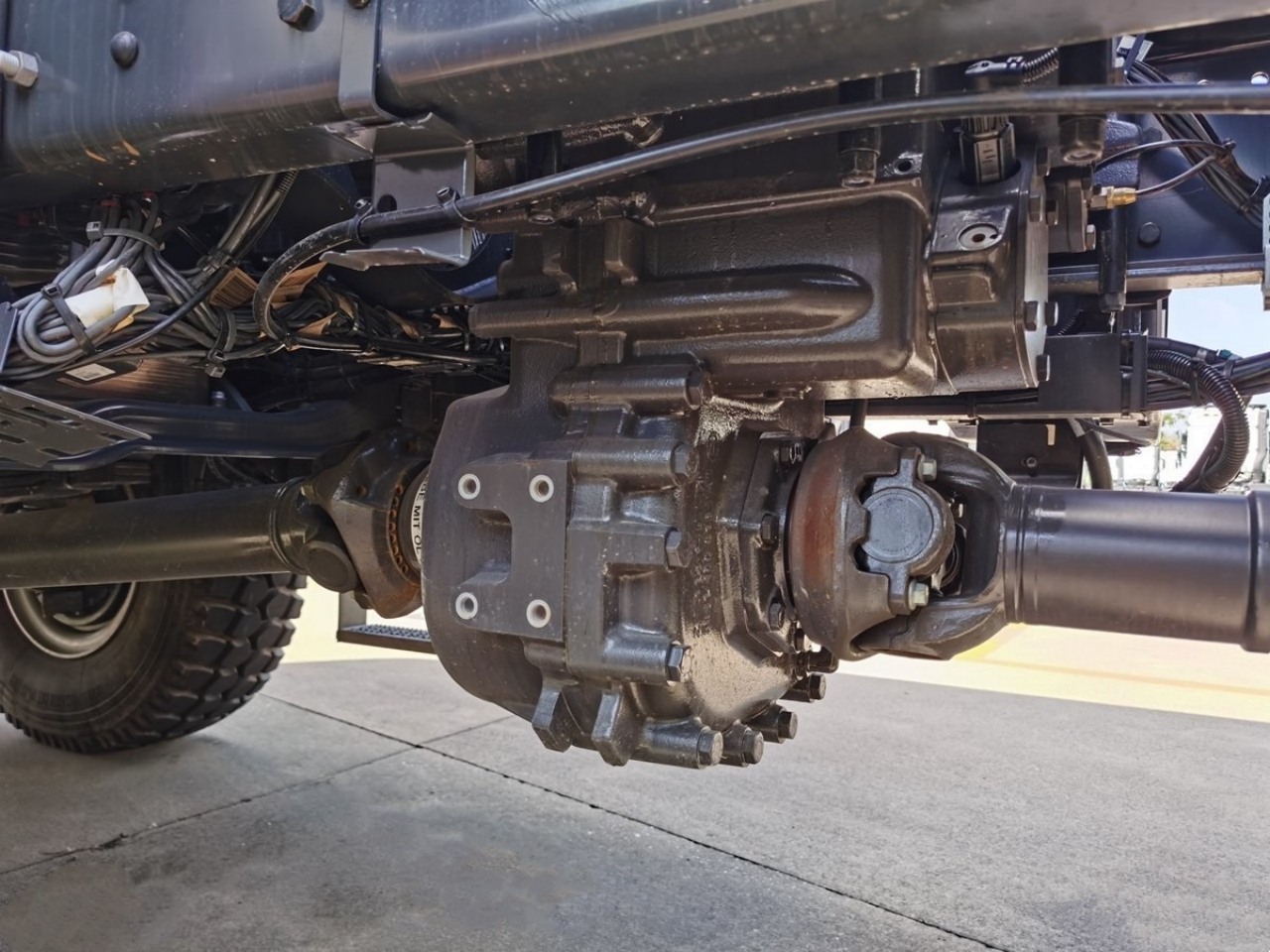
The transfer case is installed in the center of the chassis. The transmission’s output shaft connects to the transfer case, which then distributes power to the front and rear axles through 3 drive shafts. Due to the front axle requiring a drive shaft, the engine and transmission are positioned higher, resulting in the large interior floor hump.
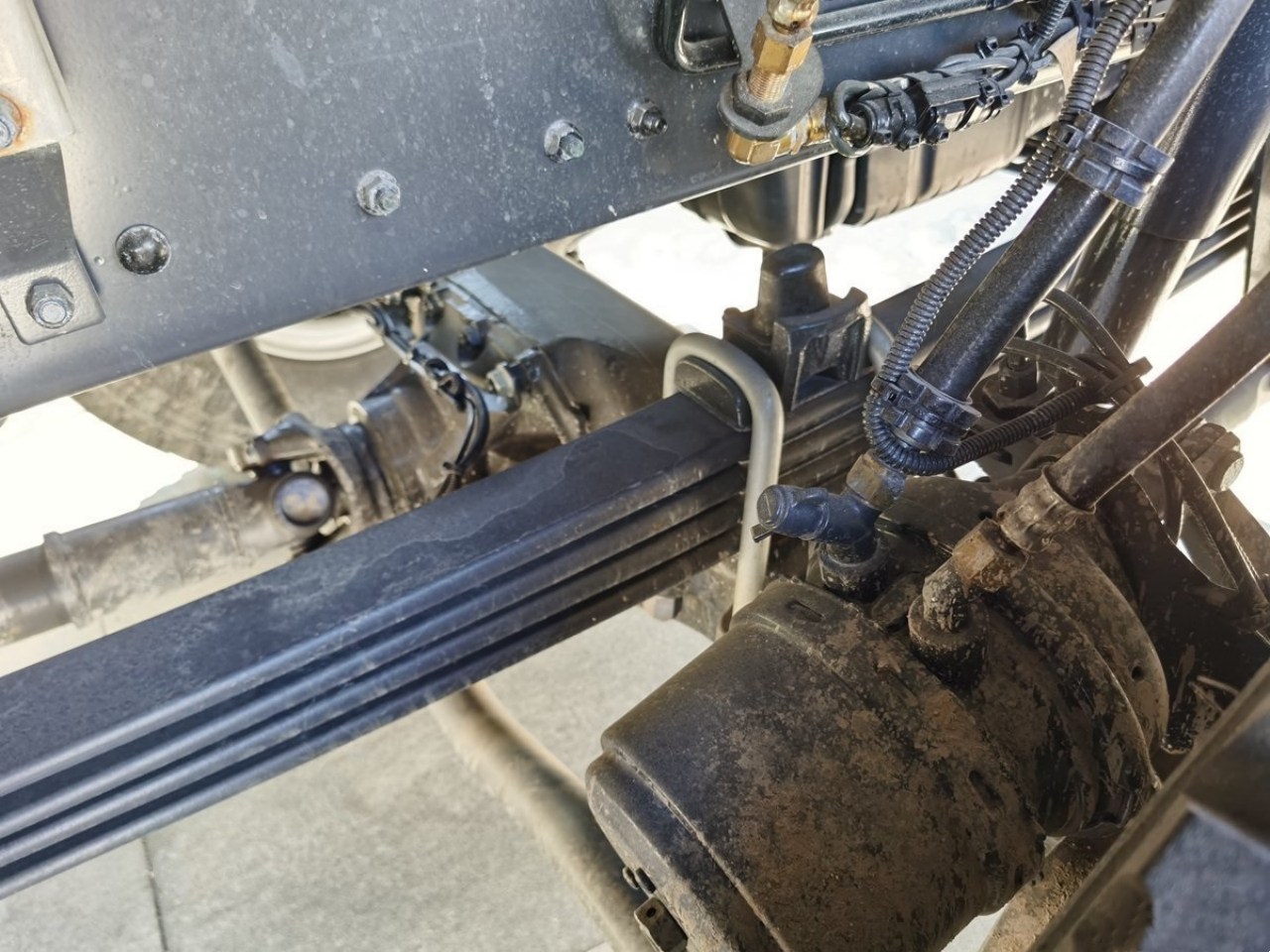
The front axle uses leaf spring suspension and air-brake chambers.
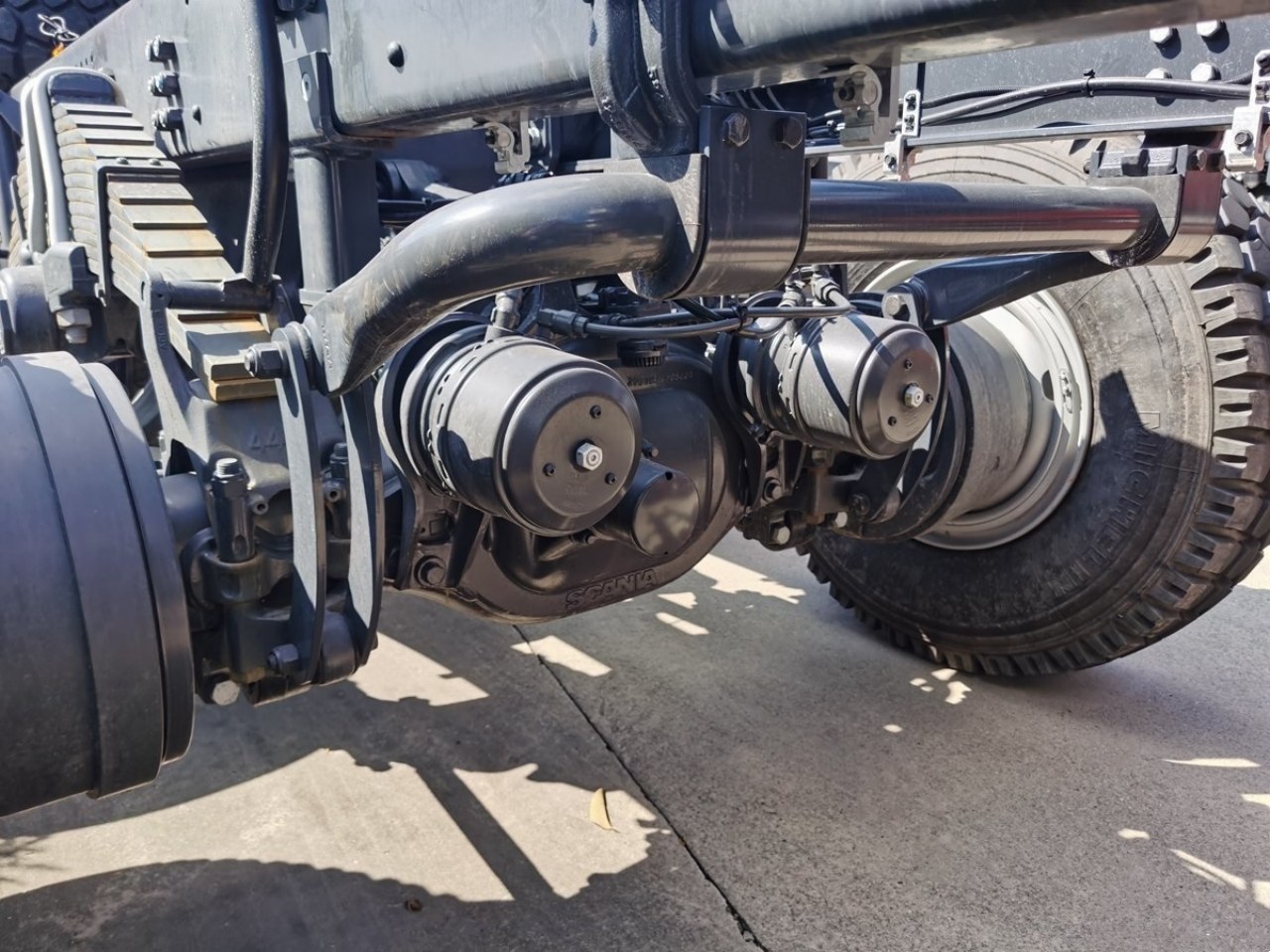
Both front and rear axles are Scania’s hub-reduction axles (final reduction in the hub), offering better off-road capability and higher load capacity compared to single-reduction axles. Both axles also feature lateral stabilizer bars. Coupled with the AT transmission, this setup allows for strong torque output and rapid acceleration.
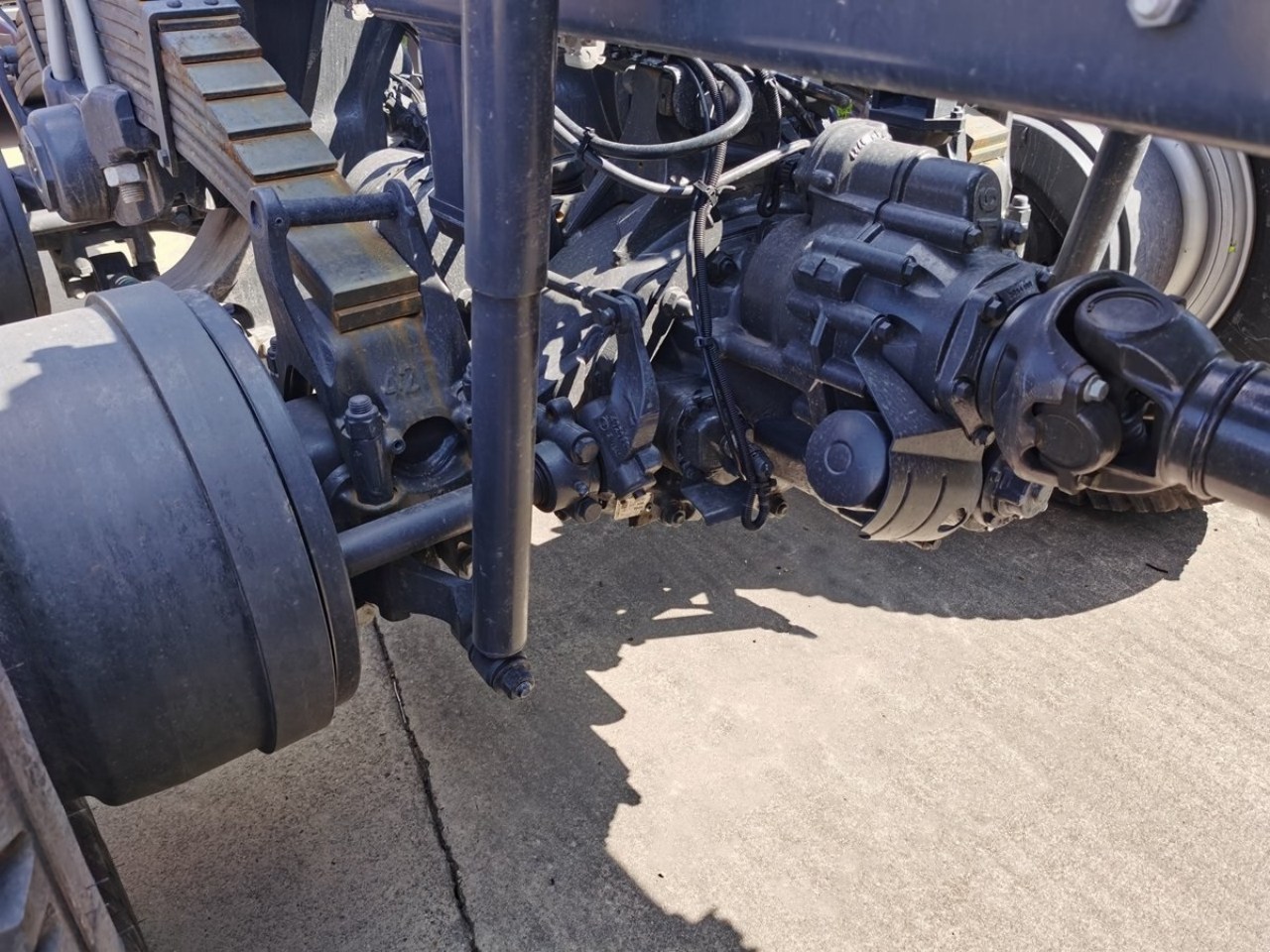
The rear axles are equipped with oil filters.
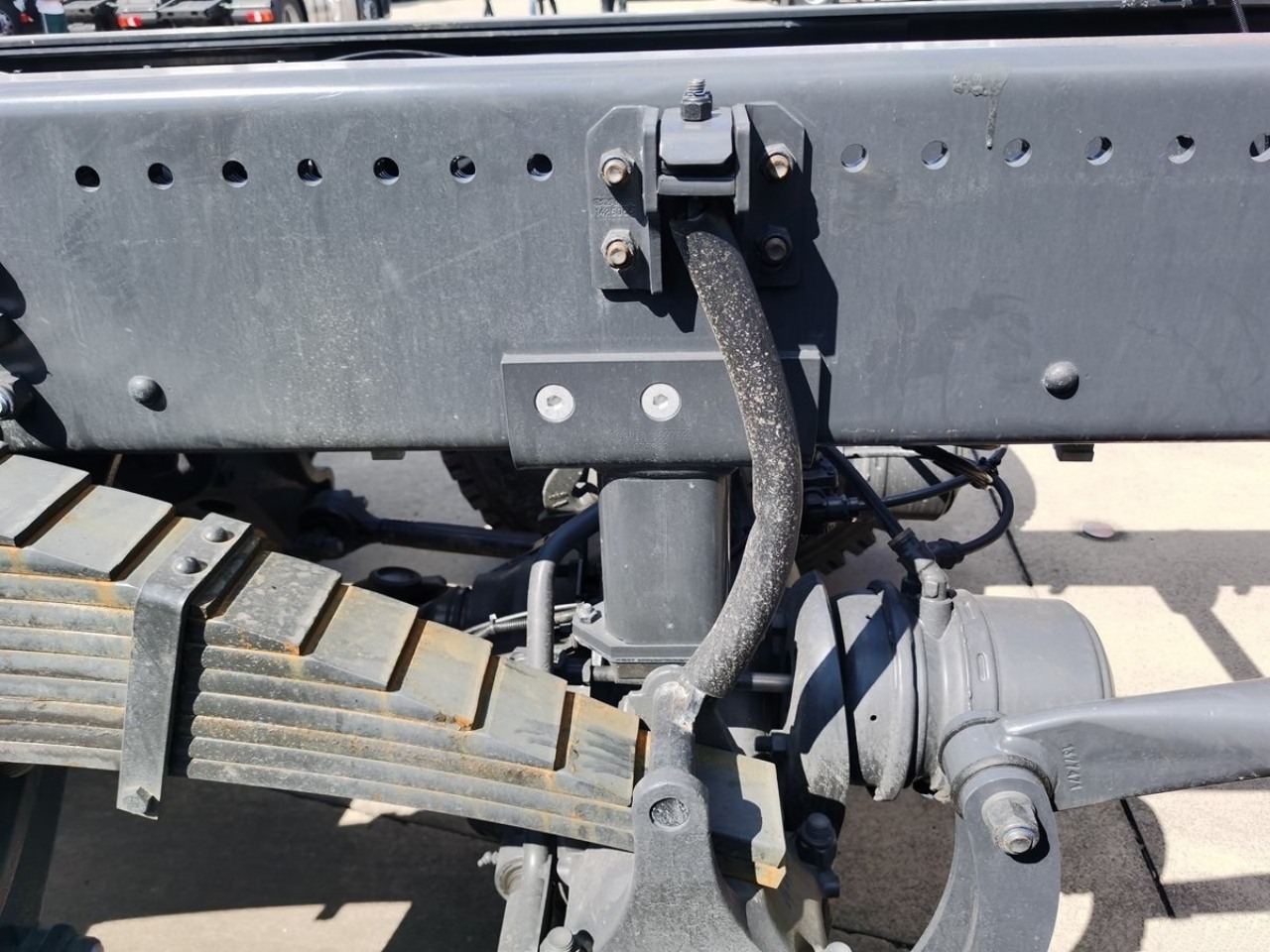
The rear axles are equipped with oil filters to improve lubrication quality and extend oil change intervals—important features for off-road and engineering applications. A steel cable is installed on the rear axles to prevent axle-frame separation under extreme articulation.
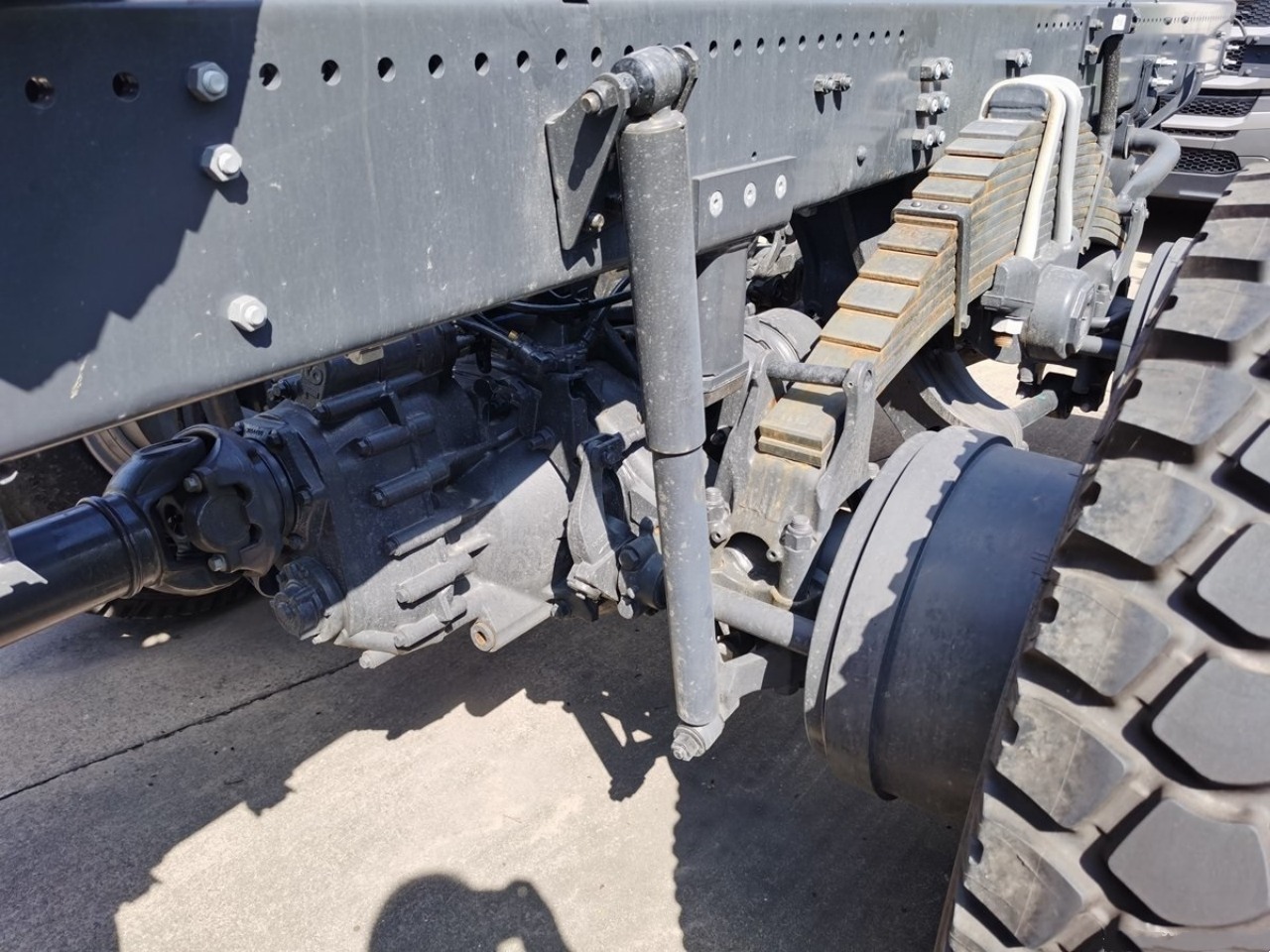
All brakes are drum-type.
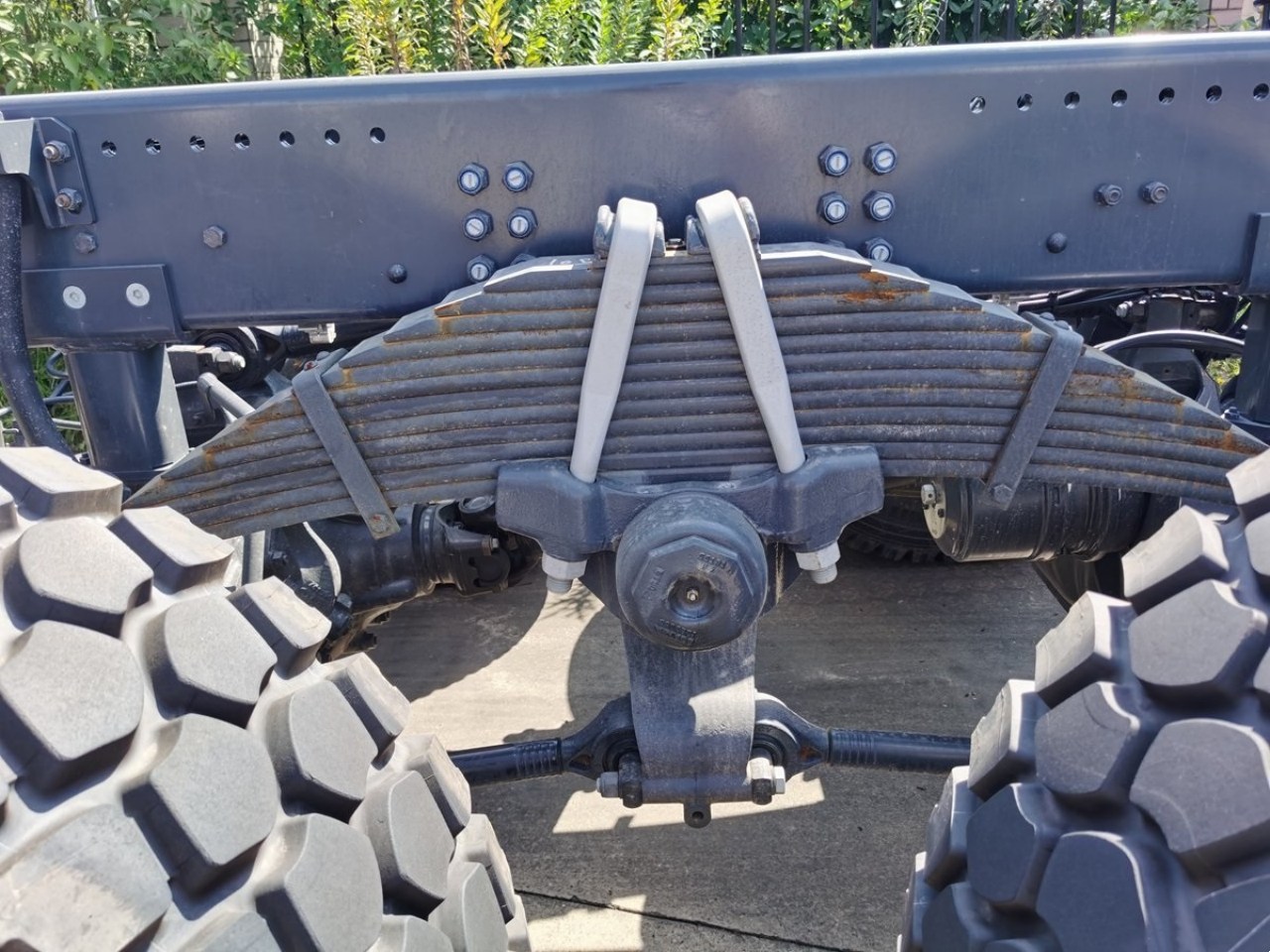
The suspension uses full leaf springs throughout the vehicle.
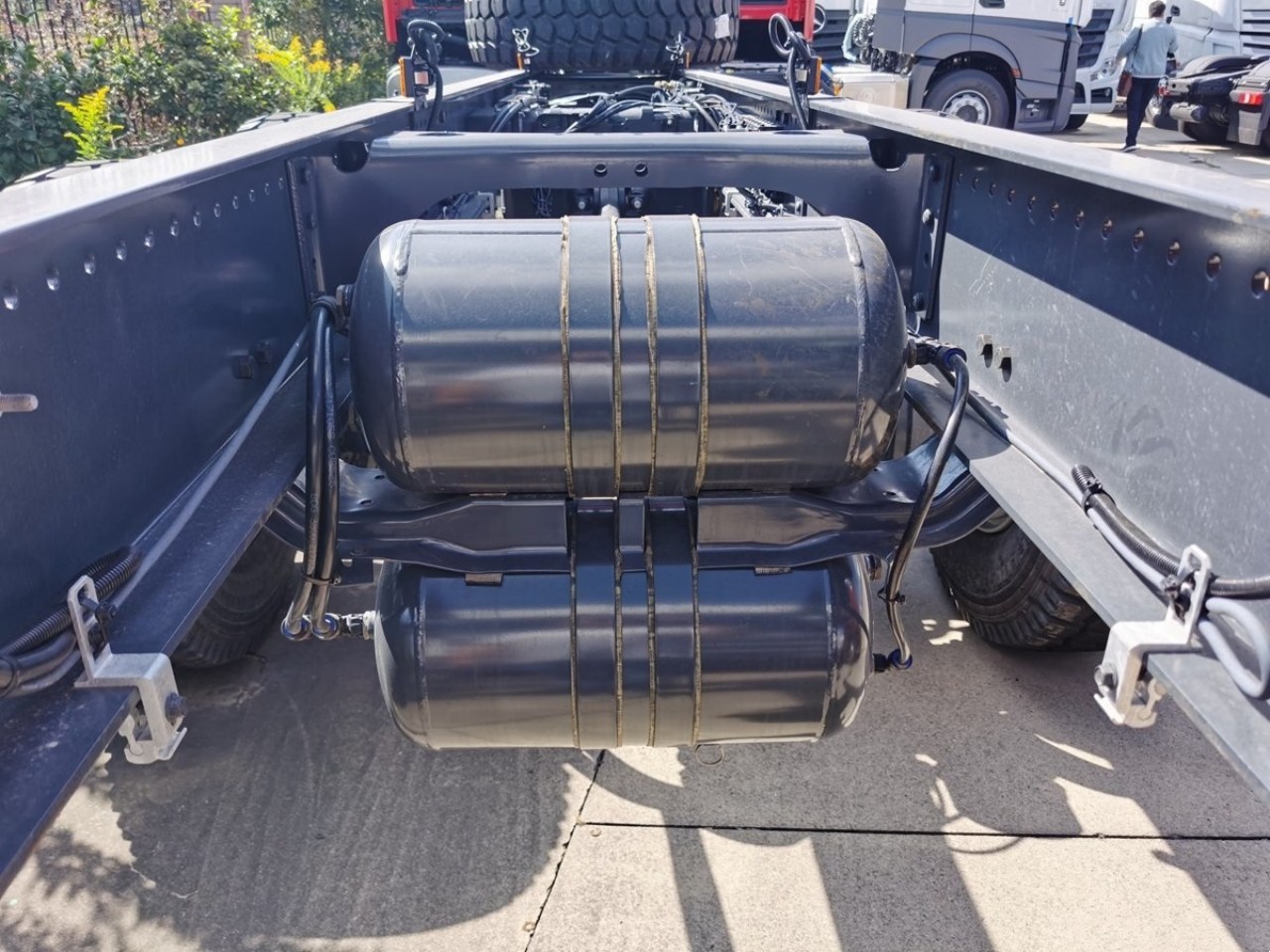
The air tanks are made of steel. The front axle uses 4-leaf springs, and the rear axles use 12-leaf springs. Drum brakes are standard front and rear. For airport fire trucks, there’s no need to worry much about heat dissipation, since travel distances are short, and the retarder provides additional braking power.

The fuel tank appears to hold around 200 liters, which is sufficient given that the airport fire truck operates only within the airport.
